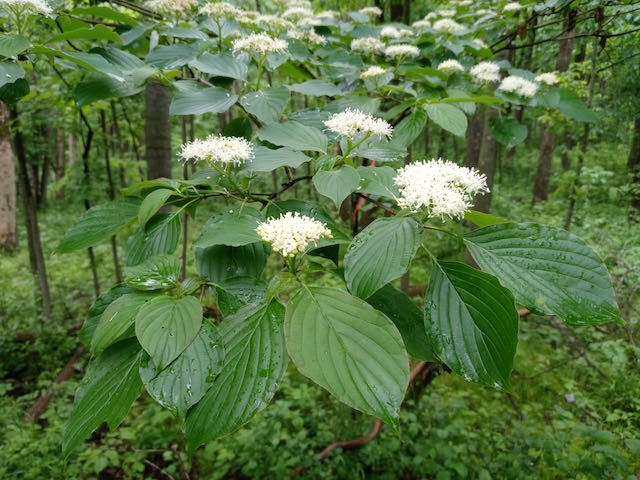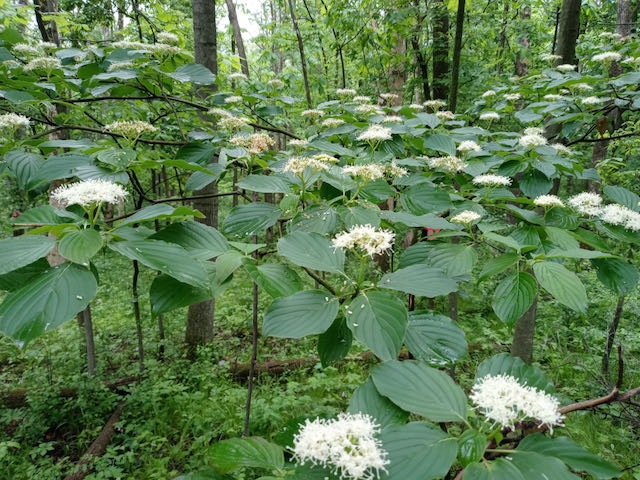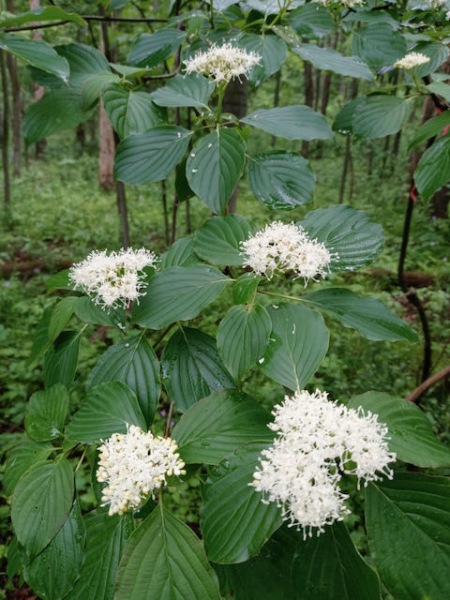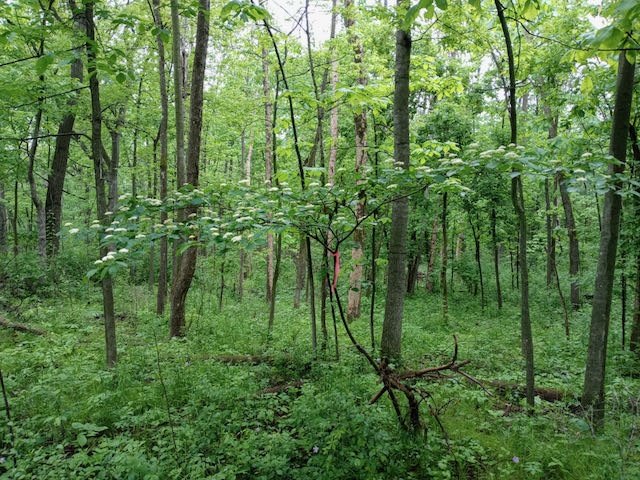alternateleaf dogwood
Cornus alternifolia
Other Common Names:
flowering dogwood, alternate-leaved dogwood, pagoda dogwood
Description:
Alternateleaf dogwood is an understory dominant in the northeastern United States and in the sugar maple (Acer saccharum) forest of the Great Lakes region.
Common associates of alternateleaf dogwood include chokecherry (Prunus virginiana), American hazel (Corylus americana), hazelnut (C. cornuta), mountain maple (Acer spicatum), striped maple (A. pennsylvanicum), black cherry (Prunus serotina), serviceberry (Amelanchier canadensis), mountain-laurel (Kalmia latifolia), huckleberries (Vaccinium spp.), and dogwoods (Cornus spp.).
Locations:
Found in woodlands and woodland edges across Wisconsin. Wisflora Online Database has recorded specimens from all counties except, Green Lake, Monroe and Winnebago.
Impact:
At least 11 species of birds including ruffed grouse eat alternateleaf dogwood. Black bear also eat the fruit. The leaves and stems are eaten by white-tailed deer, cottontail rabbits, and beavers.
alternate leaf dogwood
Click here for the Native Plants Page




